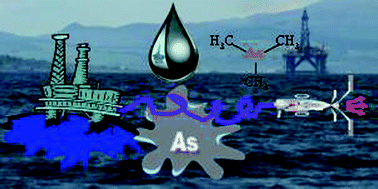Chemotrapping-atomic fluorescence spectrometric method as a field method for volatile arsenic in natural gas
Abstract
Volatile arsenic compounds in natural gas, existing in the form of

* Corresponding authors
a
University of Aberdeen, College of Physical Sciences, Trace Element Laboratory (TESLA), Aberdeen, Scotland, UK
E-mail:
e.krupp@abdn.ac.uk, j.feldmann@abdn.ac.uk
b University of Aberdeen, Aberdeen Centre of Environmental Sustainability (ACES), Aberdeen, Scotland, UK
c METCO Ltd., Emerson House, Kirkhill Industrial Estate, Aberdeen, Scotland, UK
Volatile arsenic compounds in natural gas, existing in the form of

 Please wait while we load your content...
Something went wrong. Try again?
Please wait while we load your content...
Something went wrong. Try again?
M. K. Uroic, E. M. Krupp, C. Johnson and J. Feldmann, J. Environ. Monit., 2009, 11, 2222 DOI: 10.1039/B913322D
To request permission to reproduce material from this article, please go to the Copyright Clearance Center request page.
If you are an author contributing to an RSC publication, you do not need to request permission provided correct acknowledgement is given.
If you are the author of this article, you do not need to request permission to reproduce figures and diagrams provided correct acknowledgement is given. If you want to reproduce the whole article in a third-party publication (excluding your thesis/dissertation for which permission is not required) please go to the Copyright Clearance Center request page.
Read more about how to correctly acknowledge RSC content.
 Fetching data from CrossRef.
Fetching data from CrossRef.
This may take some time to load.
Loading related content
